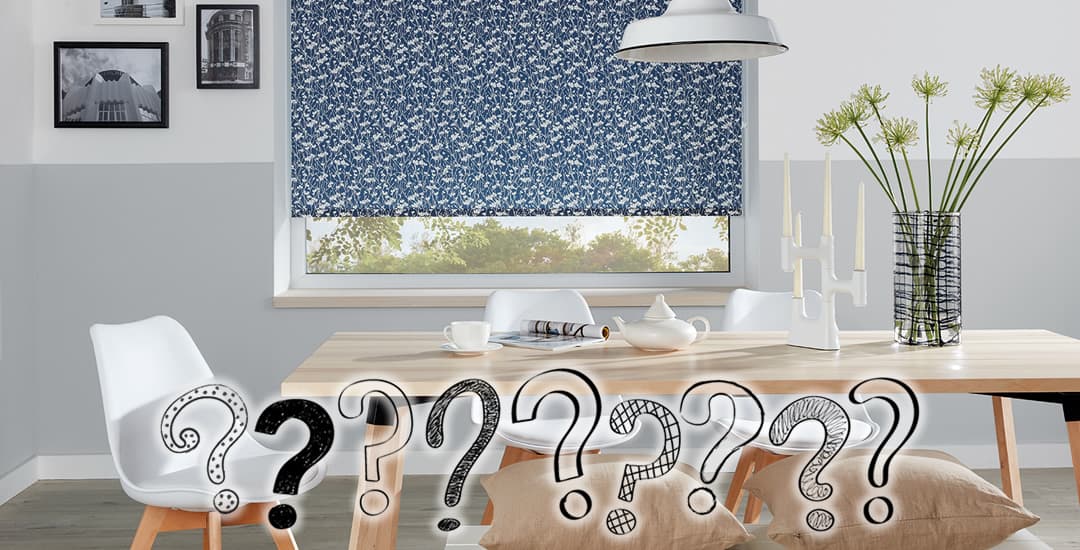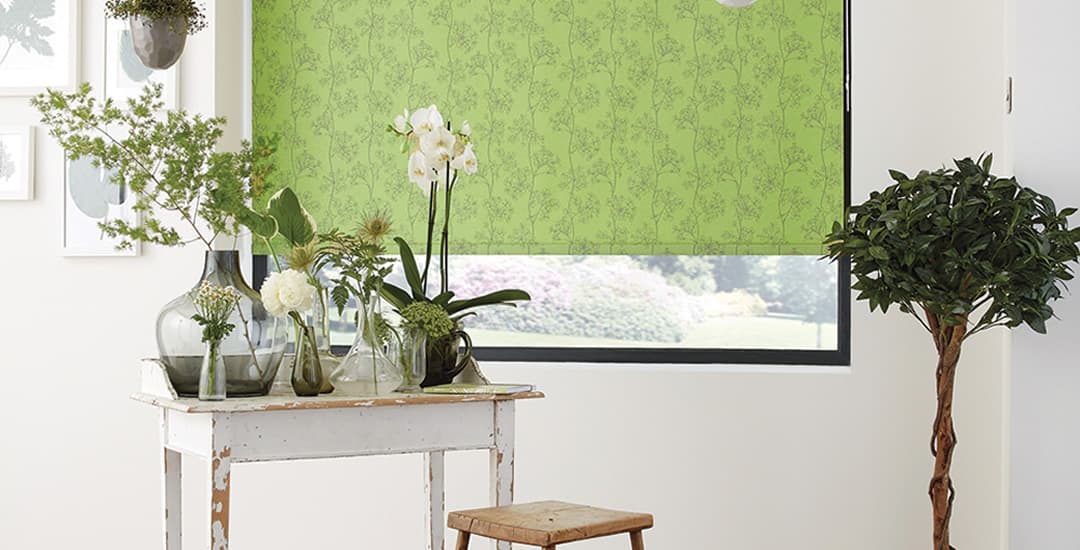
“How often should you replace your blinds?” As often as you like really! Every year would be ideal from our point of view, being as we keep food on the table by selling them… But for a rather more consumer-friendly guide, in this article I’m going to cover the factors that dictate how often, and why, you might want or need to replace your blinds.
Contents:
- 1. How often should you replace blinds, and why?
- 2. General functional and/or safety issues that may mean blinds need replacing
- 3. Common problems specific to certain types of blinds that can mean they need replacement
- 4. Style and aesthetic reasons your blinds might need replacement
1. How often should you replace blinds, and why?
A whole range of things can cause you to want or need to replace your window blinds, like their quality, functionality, and appearance.
Even how you clean and operate a blind can help to increase its longevity or alternatively, bring about its untimely demise, as can the fabric they’re made of, what they’re exposed to in their environment, and how complex they are in terms of working parts and the number of things they have in play that can potentially go wrong!
When it comes to cleaning blinds, this can actually extend their lifespans by reducing the amount of dust and grime that can build up and get into the operating mechanisms to cause problems. Also regular operation of a blind further reduces dust build up and means that the mechanisms don’t really get a chance to stiffen and stick.
The aesthetics aspect of things is important too, and while there’s not a need per se to replace a blind that’s still working perfectly well just because it’s no longer the latest design, if you do want to redecorate, switch things up, or simply feel like your current blind is a bit outdated, you might want to replace it then too.
As a ballpark figure, people tend to change or replace their blinds every 7-8 years as part of refreshing or redecorating the room, when it comes to good quality made-to-measure blinds. Mass-produced readymade blinds don’t actually tend to last for this sort of length of time anyway, and so these more or less bypass the dilemma of “to replace or not to replace” simply based on changing styles.
With that basic information in play to get you going, next I’ll look at some of the main causes, reasons, or indications that it is time to think about replacing your blinds.
2. General functional and/or safety issues that may mean blinds need replacing

There are a few potential functional or safety problems that can develop in any type of blind, which mean you’ll either need to fix the issue or replace the blind in its entirety. These universal-to-all blinds issues are what I’ll look at first.
If your blinds aren’t child safe, replacement is vital
All new blinds sold by above-board retailers in the UK must meet the relevant child safety standards. If you buy blinds from a reputable retailer serving the UK market, child safety comes as standard, as long as you fit the blinds according to the manufacturer’s instructions.
However, if the provenance of your blinds is somewhat murky or they’re getting on a bit in age, they might not meet the current child safety standard – which was last updated in 2014. If you own blinds purchased before 2014, this means you should check to see if they meet the standard, and if not, replace them or make alterations to bring them up to spec. This latter is generally entirely possible, as it essentially involves fitting additional safety features to secure blind cords, and cutting the blind’s cord down to a certain length as well as fitting a breakaway feature.
You can find out more about blinds, child safety, and the latest standard as of the 2014 revision in my previous blog post.
Damage can mean your blinds need replacement
Damage from a one-off incident or cumulative wear over time can mean it’s time to replace a blind. Broadly, the two main types of damage blinds of different types might face over their lifetimes are:
- Fraying blind cords
Most types of blinds come with operation cords (or have cords as one of their options) and these are often the squeaky wheel when it comes damage like fraying, and cosmetic issues like getting overly grubby.
Wear and tear over time can cause cords to fray and potentially jam in the mechanism, but some cords can be replaced, depending on the type of blind, (and ideally should be before the problem becomes acute) to extend the lifespan of your blind.
- An inexplicable hard nope on the operations front
All types of blinds have a control mechanism, but how this works and what is involved can vary considerably from case to case. Blinds that stick, become hard to operate, or that start making a funny noise can often be fixed, but if the issue is due to a worn or snapped component or you simply can’t get to the root of the issue at all, your blind will need to be replaced.
3. Common problems specific to certain types of blinds that can mean they need replacement
Every type of blinds has a potential weak spot or issue that can result in the need for repair or replacement, and I’ll look at the main culprits here next!
Fraying fabric in roller blinds
Generally it is only roller blinds that are at risk of fraying if the blind’s fabric isn’t hanging perfectly straight when rolled, causing a potential jam and also fraying along the sides.
If you do spot that the fabric is on a wonk or jamming up, this is easily resolved as long as you stop right away to ensure you don’t risk damage, and resolve the problem with care following our instructions for chain operated roller blinds and spring-tensioned roller blinds respectively.
Fabric can also fray due to oversights when hanging the blind, resulting in it rubbing or chafing against the wall it’s next to over a period of time. If the fraying is minor, you can often fix this by trimming off the frayed part with sharp scissors.
However, meaningful fraying for any reason, which either makes the blind look very tatty or means it’s more or less impossible to operate without risking everything snarling up, tends to mean that replacement will be required.
Bent or warped slats in Venetian, wood, and faux-wood blinds
Blinds with slats can end up with one or more slats bending or warping over time, due to the weight of the slats/blind as a whole being too much for their structural integrity, or because of overly rough handling. Real wood blinds are perhaps those most prone to warping as they get older, particularly if they’ve been exposed to damp or humidity; and faux-wood blinds can warp too if exposed to extremes of heat (above 55 degrees Celsius).
Aluminium Venetian blinds can develop dents and kinks from rough handling too.
Vertical or Venetian blinds slats not closing flush
If the slats of a Venetian blind or the louvres of a vertical blind don’t close snugly together and sit flush, this is usually down to a fault with the control mechanism, or potential damage or wear and tear over time. In some cases you may be able to find and fit a replacement part but this is not always a given; and even if you can source the part you need, disassembling the blind, replacing the goober that went wrong, and putting it all back together again and having it work first time is by no means a given!
You may want to have a go, depending on the ease of identifying the problem part and getting a new one, but this sort of issue can also herald the end of a blind’s useful lifespan.
4. Style and aesthetic reasons your blinds might need replacement

Even if your blind works exactly as it should, if its failure to age gracefully offends you every time you enter the room or if its style screams “country cottage chic” when your inner joy responds more to lots of black and chrome, it may be time for you to part ways.
In this section then I’ll look at the various different personal preferences or aesthetic issues that may herald the need for a new set of window blinkers.
Discolouration or fading over time
Blinds are exposed to the sun a lot (even in Scotland sometimes, apparently) and this can cause one of two things to happen to their fabric over time; fading in darker coloured blinds, or yellowing/discolouring in lighter ones.
Modern blinds don’t tend to suffer from these effects at anything like the speed or frequency older blinds do as they’re treated with UV protective agents, but it can still happen; and of course, if your blinds live in a room where someone smokes a lot, nicotine staining can cause discolouration (and a “that cigarette smell” developing over time too, which you may only be able to clean off to a limited degree.
All of this often leads to a desire to replace blinds even when functionally, they’re fine.
New windows, old blinds
Having new windows put in often means that new blinds will follow in short order, because when you’ve gone to all of that trouble and expense with the new windows themselves, it seems almost silly not to.
Even if your blinds look perfectly fine when the old windows are on their way out, you’re apt to start picking up on every tiny little mark or flaw when the new windows move in and start making everything else look a bit shabby in comparison.
Also, a direct like-for-like window swap is far less common than some sort of update or improvement, like adding double glazing, additional energy efficiency, or changing the size or depth of the window recess, which may mean that the old blinds simply don’t fit.
The blinds don’t meet your needs
If you bought a house that came with the blinds or if you start using a room in a new way (like many people did during the acute stage of the Covid-19 pandemic, after finding themselves suddenly needing to conjure up a home office out of their two-bedroom terraced house), the blinds that you started with might prove to be no longer fit for purpose.
They might not offer the right level of light control or privacy, have the ability to block an annoying draught from the window, or generally just aren’t the right fit for you; and so in this sort of situation, will need replacing.
Do Not Like
Finally, when it comes to good quality made-to-measure blinds, the most common reason for eventual replacement is simply that their owner goes off them, wants to redecorate, or just fancies a change. As a closed blind can take up a reasonable amount of the visual real estate in a room, this can be a fairly simple/inexpensive way to refresh and update a space, even if you don’t do anything else.
If you just don’t like your blind anymore or feel that it doesn’t fit your style, there’s pretty much no way around this but to replace it!
Can’t decide?
If you’re unsure if your blind needs to go or if anything can (or should) be done to repair or revive it, feel free to leave me a comment or email me and I’ll try to clarify things further.




